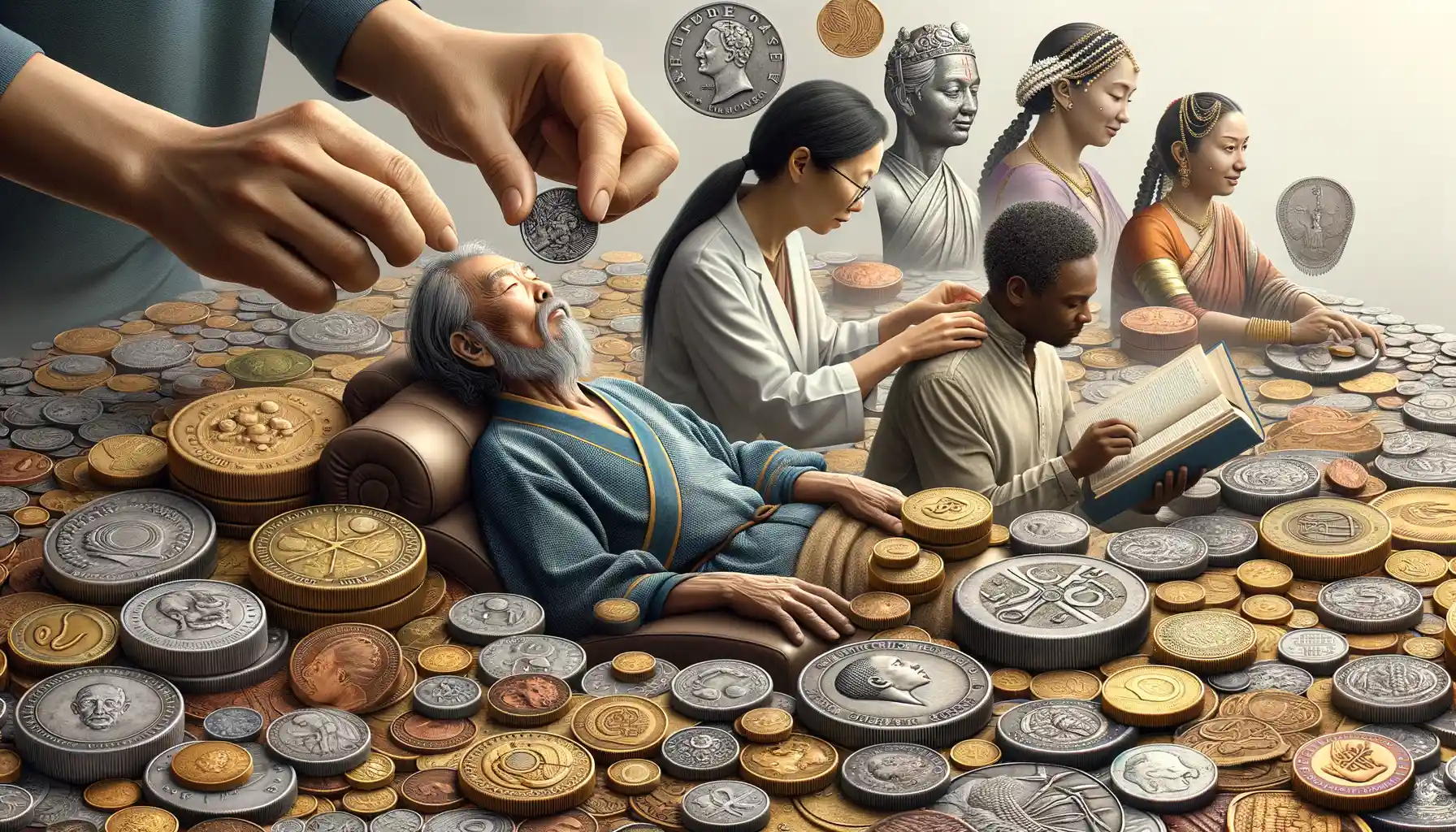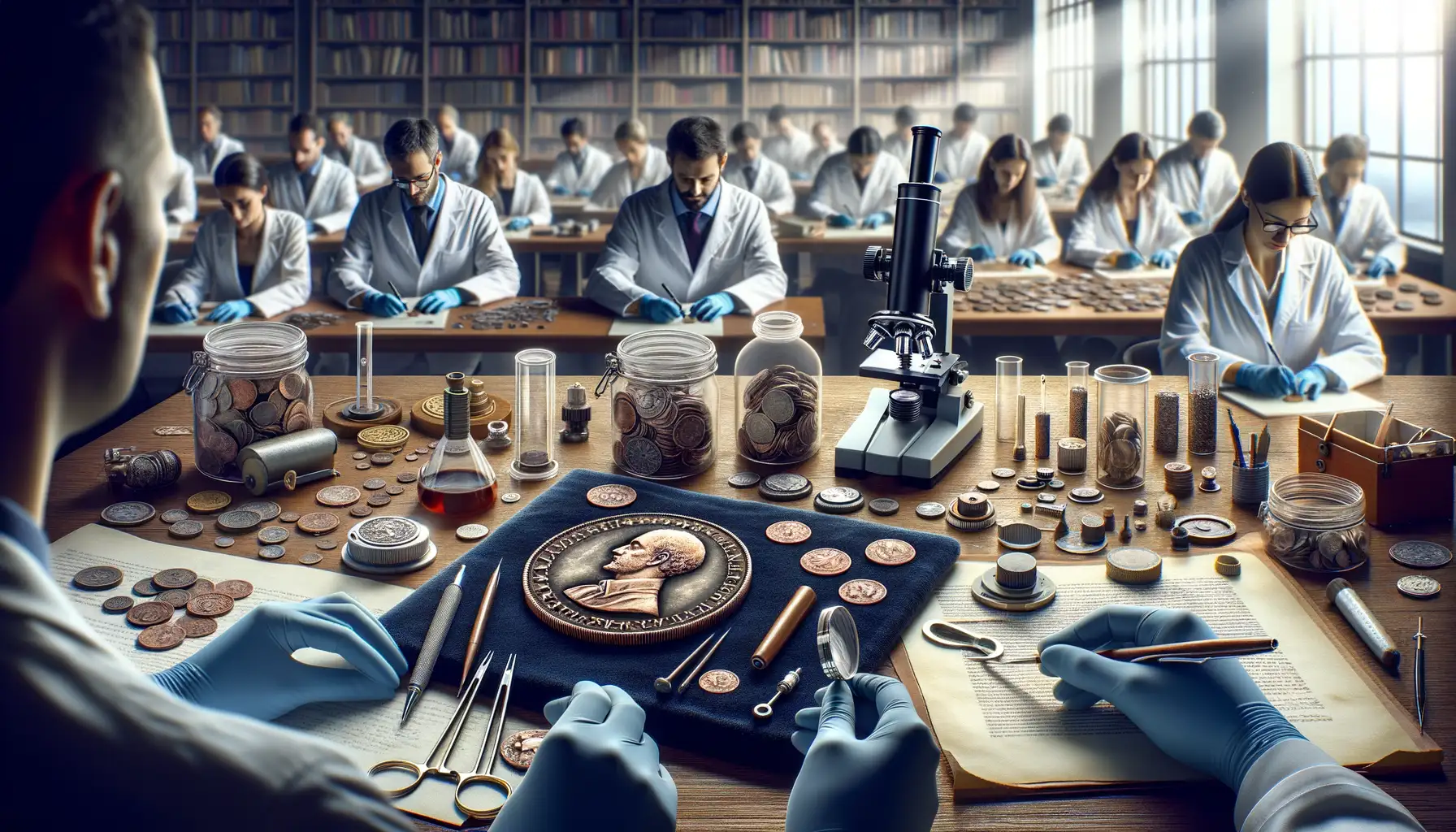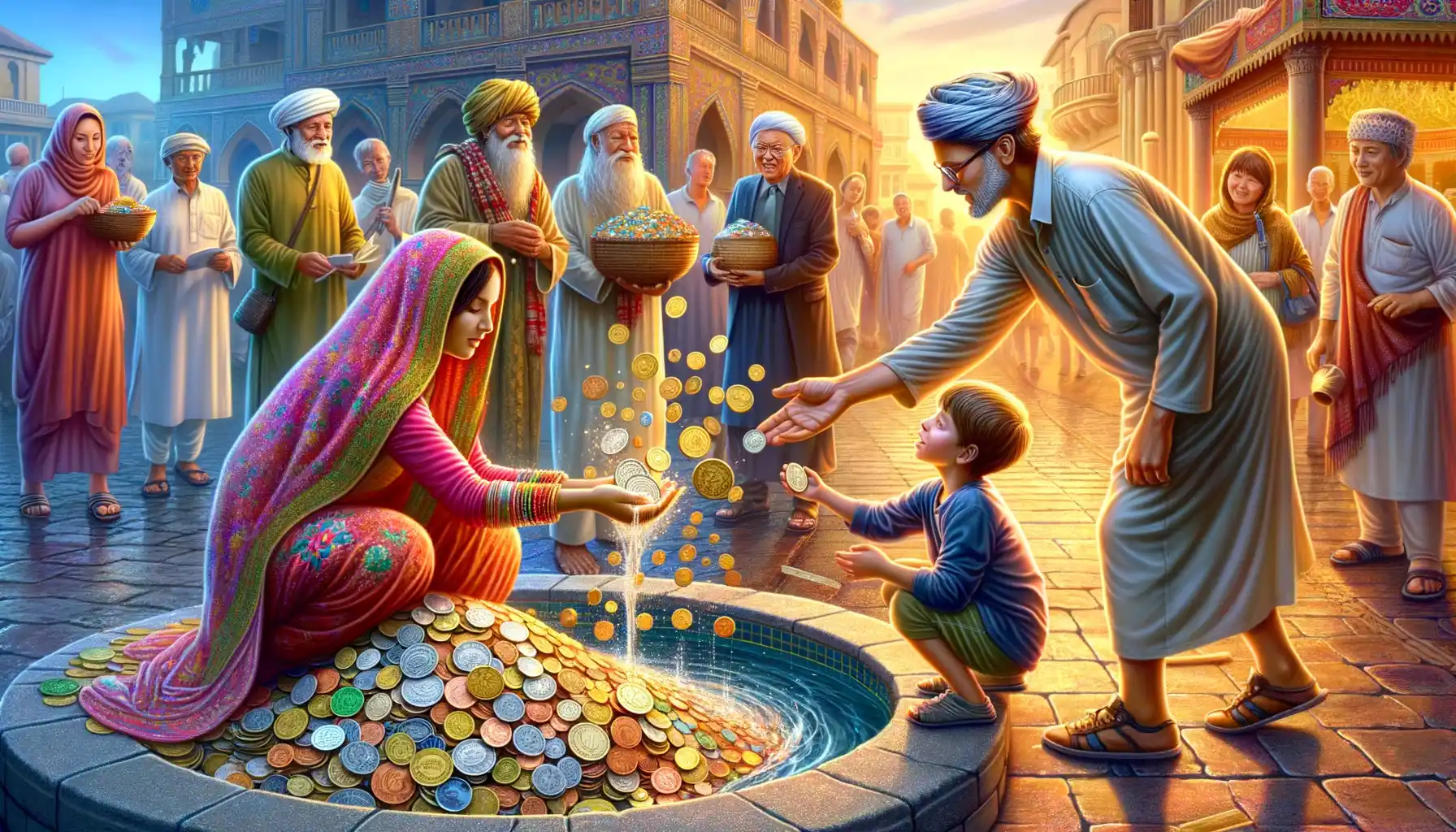Historical Background of Coin-Based Diagnostic Practices
The Mysterious Origins of Coin-Based Diagnostics
Imagine holding an ancient coin in your hand—its edges worn smooth, its surface faintly glinting with the fingerprints of history. Now, picture that humble object being pressed, rubbed, or spun to reveal the secrets of your body’s health. Strange as it may sound, this practice dates back thousands of years, rooted in civilizations that saw coins as more than just currency.
In ancient China, healers used coins during practices such as gua sha, where coins were gently scraped across the skin to release energy blockages. Coins weren’t just tools; their material—often copper or silver—was believed to connect directly to the body’s energy fields. A coin’s very touch was thought to awaken balance and harmony in the body.
Meanwhile, in Ancient Rome, coins bearing symbols of gods and emperors became health talismans. Imagine someone carrying a denarius etched with the image of Apollo, god of healing, for protection against illness. Even further west, medieval European folklore suggested that placing a coin on the tongue could “taste” the vitality of one’s blood—a practice hinting at early diagnostic curiosity.
Coins as Symbols of Mysticism and Medicine
But why coins? Why not stones or herbs? Coins have always carried dual significance: they are both physical and symbolic. Their circular shape represents life’s cycles, their metallic composition suggests permanence, and their inscriptions hold cultural identity.
Here are some fascinating historical practices involving coins:
- In 18th-century Russia, wealthy families used silver rubles to test poisoned foods, as the metal allegedly reacted with harmful substances.
- Persian physicians recommended placing copper coins on wounds to promote healing, believing the metal absorbed “bad humors.”
- African tribes integrated coins into spiritual dances, where their vibrations were said to align body and soul.
Coins, it seems, were never just about wealth. Across centuries and continents, these unassuming discs became bridges between the tangible and the mystical, helping individuals connect with their inner worlds in ways modern medicine is only beginning to understand.
Modern Applications of Coins in Alternative Medicine

Coins as Tools in Modern Healing Techniques
Have you ever thought of the humble coin as more than just loose change? In modern alternative medicine, coins are finding their way into fascinating practices that blur the line between tradition and innovation. Like tiny metallic bridges between energy and body, these everyday objects are being used in unique ways to promote healing.
One striking example is coin massage therapy. By placing coins on specific pressure points, practitioners claim to help “unlock” blocked energy pathways. Coins, particularly those made from copper or silver, are said to interact with your body’s electromagnetic field, offering a sense of balance and relief. Some even swear by this technique for easing muscle tension and stubborn headaches.
- Cupping with coins: A creative twist on traditional cupping, where heated coins are used alongside suction tools to release toxins.
- Coin scraping: Inspired by ancient Gua Sha methods, coins are gently scraped along the skin to improve circulation and reduce inflammation.
What makes these applications even more captivating? They’re as much about tactile connection as they are about healing. Coins, with their cool metallic surface, offer an almost grounding sensation—a reminder that sometimes the simplest tools hold profound potential.
Scientific Perspectives on the Effectiveness of Coin Diagnostics

Unpacking the Layers of Scientific Analysis
When it comes to coin diagnostics, the science community is cautiously curious. While skeptics raise an eyebrow, others see glimmers of untapped potential. What makes this practice so compelling? Researchers have conducted studies to peel back the mystery, diving deep into whether metals, shapes, and even the energy of coins play a legitimate diagnostic role.
Coins, for instance, are known to react with skin conditions due to their metallic composition. Metals such as copper and silver possess antimicrobial properties, which raise intriguing questions for researchers: Are healing benefits coincidental, or is there something deeper at play?
Key Findings and Ongoing Debates
Let’s break down some fascinating discoveries scientists have made so far:
- Metal reactivity: Certain metals interact subtly with the skin, sometimes highlighting imbalances or irritations unseen by the naked eye.
- Pressure mapping: Coins are occasionally used to apply pressure to specific points on the body, overlapping with acupressure techniques that have centuries-old roots.
Some scientists argue these effects can be explained by simple physics, like conductivity or thermal properties. Yet practitioners of alternative medicine often believe coins act as subtle indicators of energy blockages in the body—a hypothesis still pending rigorous validation.
The most exciting part? This field sits at the crossroads of ancient wisdom and modern inquiry, offering endless possibilities for future investigations.
Cultural Significance and Folk Practices Involving Coins

Coins as Symbols of Luck and Prosperity
Throughout history, coins have carried more than monetary value—they’ve been lucky talismans, love tokens, and even spiritual tools. Imagine finding a shiny coin on the street; it’s not just spare change—it’s a promise of good fortune! Many cultures weave coins into their rituals, believing they hold a special energy.
In Chinese tradition, for example, tying three ancient coins with a red thread represents an invitation for prosperity to knock on your door. Meanwhile, in Ireland, slipping a coin into a bride’s shoe during her wedding was said to ensure both wealth and happiness. Coins, it seems, are whispers of hope tucked into our pockets.
- In Turkey, coins are placed under a newborn’s pillow to protect them from envy.
- In Italy, tossing coins into fountains (like at the famous Trevi Fountain) secures wishes—and maybe even a return trip!
Healing Rituals Rooted in Tradition
Did you know that coins often play a starring role in folk medicine? Take Southeast Asia’s practice of “coin rubbing,” or gua sha, where smooth metal edges are used to massage the skin and release trapped toxins. It’s both an art form and a centuries-old remedy for colds and muscle pain. Similarly, in Russia, cold coins were pressed against bruises to “draw out” swelling—simple yet oddly effective.
You can’t help but marvel at the universal language of coins: whether for luck, love, protection, or wellness, they quietly connect us to traditions that are rich with human ingenuity and belief.
Future Trends and Ethical Considerations in Coin Diagnostics

Glimpses Into Tomorrow: Tech Meets Tradition
The future of coin diagnostics feels like standing at the crossroads of ancient wisdom and cutting-edge innovation. Imagine AI-powered tools working in harmony with age-old techniques, where coins might one day be embedded with microchips to measure temperature, skin conductivity, or even electromagnetic fields. This isn’t science fiction—it’s a growing possibility as wearable tech continues to evolve.
One emerging trend? Coins paired with augmented reality (AR). Picture this: a practitioner places a coin on your skin, and through an AR app, visual data appears—heat maps, energy flow diagrams, or even a comparison to historical patterns from other cases. These advancements could transform a simple copper or silver coin into a diagnostic powerhouse.
- Customizable coins: Designed for specific health issues (e.g., stress relief, inflammation detection).
- Integration with biometrics: Coins communicating directly with wearable health trackers.
The Ethical Maze: Balancing Innovation With Responsibility
Yet, as exciting as these innovations are, ethical dilemmas loom large. Should diagnostic coins be mass-produced with embedded tech, or does that risk commodifying sacred cultural practices? And how do you ensure accessibility while respecting the traditions tied to these techniques?
For instance, a coin used in small communities for centuries might end up patented by a major corporation. Protecting these cultural roots is vital. The delicate balance between progress and respect for tradition requires empathy, global collaboration, and—yes—a little soul-searching.
